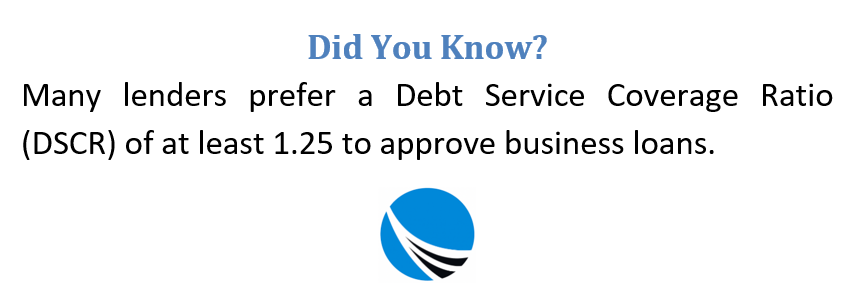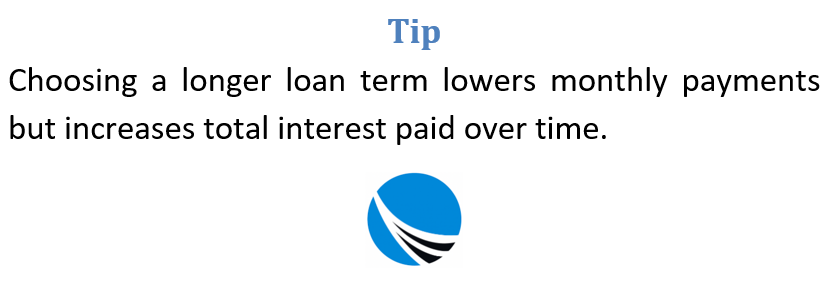Every entrepreneur, at some point, faces the critical question: “How much should I borrow for my business?” It’s a decision that can shape the future of your enterprise—for better or worse. Borrowing too little might leave you underfunded, while asking for too much can saddle your business with unnecessary debt.
This guide provides a practical approach to deciding the right loan amount for your business, by analyzing your needs, future plans, repayment capacity, and the total cost of borrowing.
Evaluating Your Business Purpose for the Loan
Before deciding how much money to borrow, define what the loan will finance. The purpose of the loan will often guide the size of the funding you require. Businesses typically seek loans for specific operational or strategic reasons:
- Growth-related projects such as opening a new branch, purchasing machinery, or expanding inventory often need sizable investment.
- Bridging operational expenses like rent, payroll, and supplies during low-revenue months requires careful cost analysis.
- Funding marketing efforts such as rebranding, digital campaigns, or customer acquisition programs often involves short-to-medium term investments.
- Managing unpredictable cash flow due to seasonality, market volatility, or customer payment delays may necessitate short-term financing.
Each of these use cases calls for a precise estimate of cost. You should project the financial requirement, include buffers for contingencies, and avoid lumping unrelated costs together to keep the estimate accurate and justifiable.

Estimating the Right Loan Based on Your Business Plans
A good starting point for calculating your loan amount is your business’s projected cash flow and growth outlook. If you foresee a surge in revenue and operational scale over the next 1–3 years, your loan should match that ambition. However, conservative borrowing is advisable if your projections indicate flat or inconsistent performance.
Businesses often consider borrowing beyond current needs to prepare for:
- New market entry
- Hiring key personnel
- Building up inventory for seasonal demand
- Strengthening financial reserves for emergencies
Look ahead 12 to 36 months. Map your revenue forecasts, operational expenses, and capital expenditures. This foresight allows you to balance between adequate funding and manageable debt. Borrowing just enough to support planned expansion while retaining financial flexibility is often a wise strategy.
Understanding How Much You’re Eligible to Borrow
Determining the amount you’re eligible for isn’t just about what you want to borrow—it’s also about what lenders are willing to provide. One of the most important metrics lenders evaluate is the Debt Service Coverage Ratio (DSCR). This figure shows whether your business generates enough income to cover its loan repayments.
A DSCR greater than 1.0 suggests your business has more cash than debt obligations, signaling healthy repayment ability. Most lenders, however, prefer a DSCR of 1.25 or higher for small businesses, and values above 2.0 are seen as very strong.
To calculate DSCR:
- Net Operating Income (NOI) ÷ Annual Debt Payments = DSCR
If your business generates $120,000 in operating income and the annual loan repayment is $40,000, your DSCR is 3.0—strong enough to support a fairly large loan.
Besides DSCR, lenders also examine:
- Length of time in operation
- Credit score
- Revenue trends
- Profit margins
- Existing debts
- Availability of collateral
Understanding your financial standing from the lender’s viewpoint will give you realistic expectations about how much you can borrow.
Choosing the Best Repayment Structure for Your Situation
Loan repayment terms vary significantly and impact how much you should borrow. Think about how fast you need the money and how long you’ll take to repay it.
- Short-term loans often come with higher interest rates and larger monthly payments but may be necessary for immediate needs like stock purchases or emergency repairs.
- Long-term loans usually offer lower interest rates and smaller monthly installments, but accrue more interest over time.
Let’s say you take a $100,000 loan over 3 years versus 7 years. The monthly payments will be higher on the 3-year loan, but the total interest paid will be lower. On the other hand, the 7-year loan eases your cash flow but increases the overall borrowing cost.

Factoring in the Total Loan Cost
The advertised loan amount isn’t the full story. You also need to account for:
- Origination fees
- Processing fees
- Prepayment penalties
- Late fees
- Underwriting charges
Even if the interest rate seems attractive, these additional costs can significantly raise the real cost of your loan. For example, a 2% origination fee on a $150,000 loan immediately takes $3,000 off the top.
The frequency of interest accrual also matters. Daily compounding interest can quickly increase your balance compared to monthly compounding. If you’re operating on slim profit margins, this can stress your financials over time.
A clear understanding of all associated fees and charges enables you to assess whether the loan is truly affordable. Review the lender’s offer carefully and calculate the Annual Percentage Rate (APR), which includes all costs of the loan, not just the interest.
Aligning Your Loan with Your Business’s Financial Capacity
Borrowing sensibly means aligning your loan amount with both current needs and long-term strategy. Ideally, your repayments should be manageable within your cash flow without cutting into essential operations. If you’re forced to reduce marketing, delay payroll, or hold off on key purchases just to make loan payments, you’ve likely borrowed too much.
Use your income statements, cash flow projections, and balance sheets to assess how much monthly repayment your business can sustain. Include scenarios such as:
- A 10–15% drop in revenue
- Unexpected repairs or emergencies
- A delay in customer payments
Stress testing your loan repayment under such scenarios helps avoid financial strain and late payment penalties.
Bottom Line
Determining the right business loan amount isn’t just a numbers game—it’s a strategic decision rooted in your operational reality and future aspirations. It requires an honest look at why you need funding, how you’ll use it, and how comfortably you can repay it without hurting your cash flow.
Evaluate what you qualify for, calculate your repayment ability, analyze all costs involved, and forecast the long-term impact on your business. Don’t hesitate to consult a financial advisor or accountant to fine-tune your decision. When approached carefully, a business loan can be a powerful catalyst for growth—just make sure it fits your vision and capabilities.
Mostly Asked Questions about Business Loans
What Should I Consider Before Applying for a Business Loan?
You should clearly define the purpose of the loan, estimate costs associated with it, and ensure the funds align with your growth plans and operational needs.
How Do I Decide the Right Loan Amount?
Base it on projected cash flow, short- and long-term financial goals, and the actual funding required. Avoid over- or under-borrowing by forecasting 12–36 months ahead.
What Is DSCR and Why Is It Important?
The Debt Service Coverage Ratio (DSCR) measures your ability to repay a loan. A DSCR above 1.0 is good, while lenders prefer 1.25 or higher.
Read Also: Top Business Loan Types Explained: Secured, Unsecured, Term & Revolving Credit Options for 2025
How Can I Calculate My DSCR?
Divide your Net Operating Income by the total annual debt repayments. This helps assess how much debt your business can realistically afford.
Should I Choose a Short-Term or Long-Term Loan?
Short-term loans suit urgent needs but come with higher payments. Long-term loans spread out payments but result in more interest over time.
What Additional Costs Come with Business Loans?
Look out for origination fees, processing fees, prepayment penalties, and interest compounding frequency, all of which affect the total cost.
How Do I Use a Loan Calculator Effectively?
Input loan amount, interest rate, and term to see how repayment schedules affect monthly obligations and total interest costs.
Why Should I Consult a Financial Advisor Before Borrowing?
A financial advisor helps assess your business’s financial health, reviews risks, and ensures the loan supports your long-term strategy.


